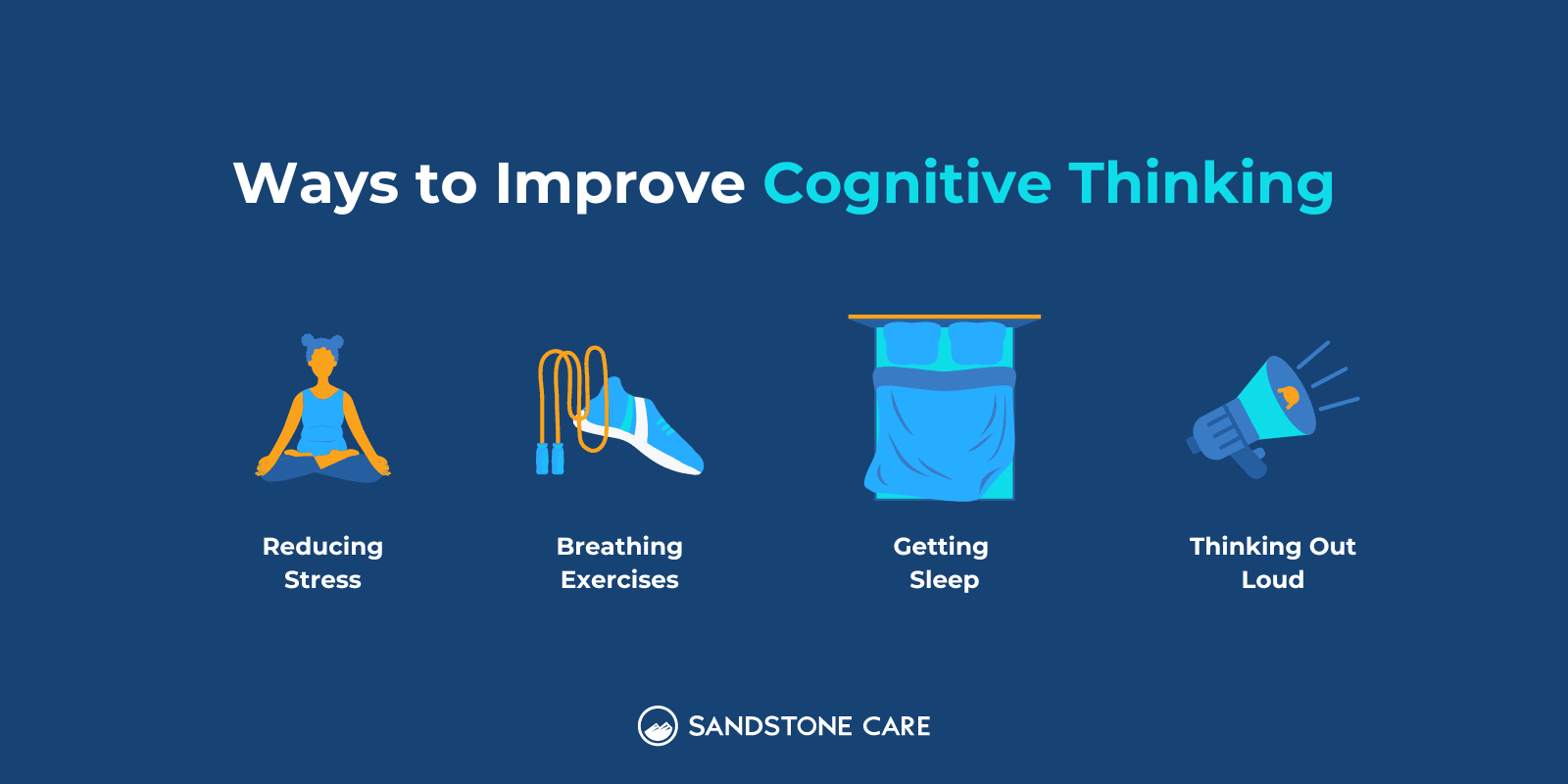Cognitive Restructuring in CBT: Steps, Techniques, & Examples


Cognitive restructuring is part of many forms of psychotherapy, or “talk therapy,” including Cognitive-behavioral therapy (CBT).
Cognitive restructuring is an important component of CBT that helps people identify and change negative and unhealthy thinking patterns.
Everyone experiences difficulties or negative feelings at some point in their life. Often, these difficulties can affect the way you think, feel, and behave.
It is normal to have negative thoughts from time to time, but when those thoughts become patterns, they can impact a person’s mental health and overall well-being.
Cognitive restructuring is also referred to as cognitive reframing.
An example of cognitive restructuring can involve a situation where you see your friends have gone out without you.
The initial thought is that your friends don’t like you, that you don’t have any friends, and that something is wrong with you.
These thoughts may cause a person to feel sad, lonely, and rejected.

Evidence that may support this thought could be that you possibly get moody sometimes.
Evidence that would not support this thought is that you have been invited to many things, and your friends have communicated that they love being with you. Another piece of evidence could be that other close friends weren’t invited as well.
The alternative thought could be that you are still good friends and they like you, but that doesn’t mean you have to be invited to every event.
The new outcome of this situation is that you are no longer worried and feel happy.
Cognitive distortions are thought patterns that cause a person to view reality in inaccurate and commonly negative ways.
Many people experience cognitive distortions once in a while, but if reinforced often, they can cause problems in a person’s mental health, relationships, and well-being.
One example of cognitive distortion can be overgeneralization. When a person overgeneralizes, they come to a conclusion about a single event and then apply that conclusion to the events that follow.
For example, a person with a negative experience in one relationship may believe that they are incapable of having a good relationship.

Another cognitive distortion can be catastrophizing or magnification. This happens when people assume the worst-case scenario when they come across uncertainty.
For example, a person may not see their paycheck processed right away into their account, and they may believe it will never come and that they can’t pay rent and won’t have a place to live.
One of the most common cognitive distortions is personalization.
Personalization is when someone takes things personally, even if they didn’t cause them or have any connection to them. An example is when a person blames themselves for things that are out of their control.
Other cognitive distortions include:

Cognitive therapy is not a one-size-fits-all process and uses a variety of techniques.
Some techniques used in cognitive restructuring involve:
Step one of cognitive restructuring involves writing down the upsetting situation.
Examples of this can include an event, an argument, or a memory of an event.
The second step is to identify upsetting feelings associated with the situation. It can be helpful to focus on one of the main feelings: fear, anxiety, sadness, depression, guilt, shame, and anger.
Step three involves identifying your thoughts about the situation that are underlying the feelings. This step can involve asking questions like:
Step three also involves writing down these thoughts related to the situation.

Step four involves evaluation. Looking at the situation and the accuracy of the upsetting thought.
This can involve thinking of all the evidence that supports your thought and makes you think it’s accurate and thinking of all the evidence that does not support your thought.
Step five is deciding on the accuracy of your thought based on the evidence from step four. In this step, it is helpful to base your decision on evidence that is objective and based on facts rather than your beliefs or feelings.
After making a decision, and if the evidence does not support the thought, you can come up with a new and more accurate thought to replace the old one.
Cognitive restructuring aims to change unhealthy beliefs and thought processes to improve one’s mental health and well-being.
Cognitive thinking involves processing one’s knowledge, thoughts, and experiences.
There are ways to improve your cognitive thinking, which can include reducing stress, engaging in breathing exercises, meditating, taking a walk or going outside, exercising, getting sleep, thinking out loud, and concept mapping.

Challenging negative thoughts involves restructuring and reframing your thoughts in a more accurate, positive way.
One of the first steps in challenging negative thoughts is to understand your own thought patterns. When you can identify negative thought patterns, you can learn how to change and replace them with healthier thought patterns.
A way to challenge negative thoughts is by practicing mindfulness. Mindfulness refers to the practice of becoming completely aware of what is happening in the present, including your thoughts, feelings, sensations, and environment.
A person can practice mindfulness through meditation, helping them recenter and gain a new perspective to better understand and challenge their thoughts.

Another way to challenge negative thoughts is by recording them or journaling. Writing down your thoughts can be a healthy way to express what you are thinking and feeling and provide you with a new understanding you may not have had before.
A person can also focus on good things and things that they are thankful for as a way to challenge negative thoughts. Doing so can help get a person out of a negative mindset and help them transition into a more positive one.
Lastly, seeking help from a mental health professional can give you the support and resources to help manage negative thoughts and learn how to challenge them.
It is important for a person struggling with mental health to know that they are not alone and that there is help.
Cognitive restructuring and cognitive reframing can help a person fix cognitive distortions.

Cognitive restructuring and cognitive behavioral therapies can be extremely helpful for those struggling with mental illnesses and mental health conditions, especially with anxiety and depression.
According to Cognitive Therapy and Research, CBT is a reliable first-line approach for anxiety disorders.
CBT can also serve as an effective treatment for individuals struggling with depression, addiction, and other mental health disorders.
Additionally, CBT for children and adolescents has proven to be effective as well.
Emotional reframing involves revisiting your memories, emotions, and feelings and reframing them in alternative ways to change how it impacts an individual emotionally.
Negative thinking can lead to negative emotions and behaviors. By reframing the way you think, a person can see improvements in their mood and emotions.

Positive reframing involves thinking of negative memories, emotions, thoughts, or situations in a more positive way.
Positive reframing doesn’t change the event or situation but can put things in a better perspective and change outcomes.
Cognitive reframing is also referred to as cognitive restructuring.
Other words that you can think of when thinking of “reframing” can be “reworking,” “reexploring,” “reevaluating,” or “rethinking.”
One example of reframing is looking at problems as challenges.
Everyone has difficulties that they experience in their life. Often, it can be difficult to navigate these problems and decide what to do about them. These problems can affect a person’s life, health, and well-being.
Seeing difficulties as problems can put someone into a negative mindset and cause feelings like helplessness, discouragement, and sadness.
However, when you reframe those thoughts to be looked at as challenges, it can show the person that they have the opportunity to turn it around, that there are better things that can come from it, and that you don’t have to be “stuck” with the problem.

Six-step reframing involves:
When reframing a mindset or a thought, it is important to understand how these thoughts are unhealthy or negative.
Ask questions to yourself, write in a journal, or think aloud so you can better understand the patterns in place and alternative ways to reframe them.
When looking at alternative ways to reframe a mindset or thought, consider the accuracy of the initial thoughts and compare them to the alternatives. Which one results in a better and more realistic outcome?
Making a personal inventory of your strengths, achievements, and qualities can also help create a more positive perspective.
Reframing your mindset can help you turn negative and unhealthy thoughts into positive and balanced thoughts.

Writing down your fearful thoughts can help a person gain better insight and understanding.
When you write down a situation or problem, write about how you felt and the emotions that came along.
Think about alternatives to your thought processes and fears and decide which alternative is the most healthy and balanced.
An important part of reframing bad and unhelpful thoughts is being aware of distorted thinking patterns.
Once you can identify these patterns, ask yourself questions, whether it is in your head, written down, or out loud.
By asking yourself questions, you can gain better insight and understand how to navigate and reframe bad thoughts.
Consider the evidence that supports and does not support your initial thought.
Given this evidence, think about how you can reframe your negative thoughts to better reflect reality in a more positive way. Then, think of alternative thoughts that can replace the old one.

All people are faced with difficult experiences in their lives.
Often, these experiences can lead to a spiral of negative effects on one’s mood, emotions, feelings, and the following situations.
By reframing negative experiences, you aren’t necessarily changing the experience itself but rather the outcome and the feelings associated with the experience.
To reframe an experience, it is important to identify and examine all the parts of it. How you felt, what you were thinking, and where these thoughts are coming from.
By asking yourself questions, you can gain a better understanding of the accuracy of these thoughts and gain a new perspective on the situation.
Think of alternative ways to think about the experience and determine whether an alternative can produce a better or more accurate outcome.
By choosing the outcome that better reflects reality, you can reframe your experiences into more positive ones.
FAQS
Our goal is to provide the most helpful information. Please reach out to us if you have any additional questions. We are here to help in any way we can.
Studies suggest that doing self-guided CBT can be very effective, especially for mental health disorders like anxiety and depression.
Sometimes, a person may not have close access to a CBT therapist, or it may be difficult to make time to see a therapist, but it is still important for them to prioritize their mental health.
Self-help CBT may work best for people who have mild symptoms and are generally able to function well. However, for a person whose everyday life is impacted by mental health conditions, it is probably more fitting to reach out to professional help.
There are a lot of books and resources available for people who may want to try self-guided CBT.
When figuring out if CBT will work for you, you want to find a book or resource that resonates with you and fits well with your needs. Different approaches are out there, and it is more effective when it is a good match for you.
You also want to ensure that the resources you are using are from credible and reliable sources and that they are based on good research.
Lastly, making time for it and committing to the program as closely as possible is important; doing so can ensure that you stay on track and pushes you towards more progress.
Some of the things that CBT books and programs involve include:
However, if you are struggling with mental health, it is important and beneficial to seek professional help. A therapist can help give you guidance and support alongside CBT practices you can do yourself.
Cognitive restructuring is a core component of CBT.
Cognitive restructuring and CBT do not mean the same thing, as cognitive restructuring is a type of CBT technique. However, the two are closely intertwined.
Cognitive restructuring can be part of numerous types of psychotherapy, not only CBT.
Post-traumatic stress disorder (PTSD) is a chronic mental health disorder that may develop after experiencing a traumatic life event.
According to Frontiers in Behavioral Neuroscience, CBT is another strongly recommended therapy by the American Psychological Association for PTSD.
Cognitive restructuring can help individuals with PTSD identify dysfunctional thoughts and thinking behaviors, form rational and alternative thoughts, and reframe beliefs about themselves, trauma, and the world.
Studies show that exposure and cognitive restructuring were effective in reducing symptoms of PTSD symptoms.
According to the National Institute of Mental Health, depression is usually treated with psychotherapy, medication, or a combination of both.
CBT is one of the evidence-based approaches specific to the treatment of depression.
In CBT, mood checks can take place at the beginning or the end of a session.
Mood checks give the therapist an opportunity to see how the individual’s mood is and how they have been since the last session.
This process can also help therapists and individuals keep track of progress throughout therapy.


Cognitive Restructuring can help individuals identify and change unhealthy and negative thought processes into more realistic, positive ones. Sandstone Care is here to support teens and young adults with mental health and substance use disorders.